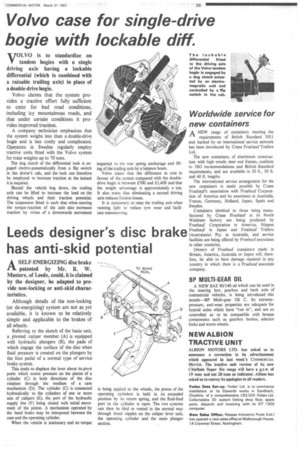A SELF-ENERGIZING disc brake patented by Mr. R. W. Masters, of
Page 41

If you've noticed an error in this article please click here to report it so we can fix it.
Leeds, could, it is claimed by the designer, be adapted to provide non-locking or anti-skid charac teristics.
Although details of the non-locking (or de-energizing) system are not as yet available, it is known to be relatively simple and applicable to the brakes of all wheels.
Referring to the sketch of the basic unit, a iiivoted caliper member (A) is equipped with hydraulic plungers (B), the pads of which engage the surface of the disc when fluid pressure is created on the plungers by the foot pedal of a normal type of service brake system.
This tends to displace the lever about its pivot point which exerts pressure on the piston of a cylinder (C) in both directions of the disc rotation through the medium of a cam mechanism (D). The cylinder (C) is connected hydraulically to the cylinders of one or more sets of calipers (E), the port of the hydraulic supply line (F) being closed with initial movement of the piston. A mechanism operated by the hand brake may be interposed between the cam and the operating cylinder.
When the vehicle is stationary and no torque is being applied to the wheels, the piston of the operating cylinders is held in its extended position by its return spring, and the fluid-feed port to the cylinder is open. The two systems can then be bled or vented in the normal way through bleed nipples on the caliper lever unit, the operating cylinder and the main plunger section.
















































































































